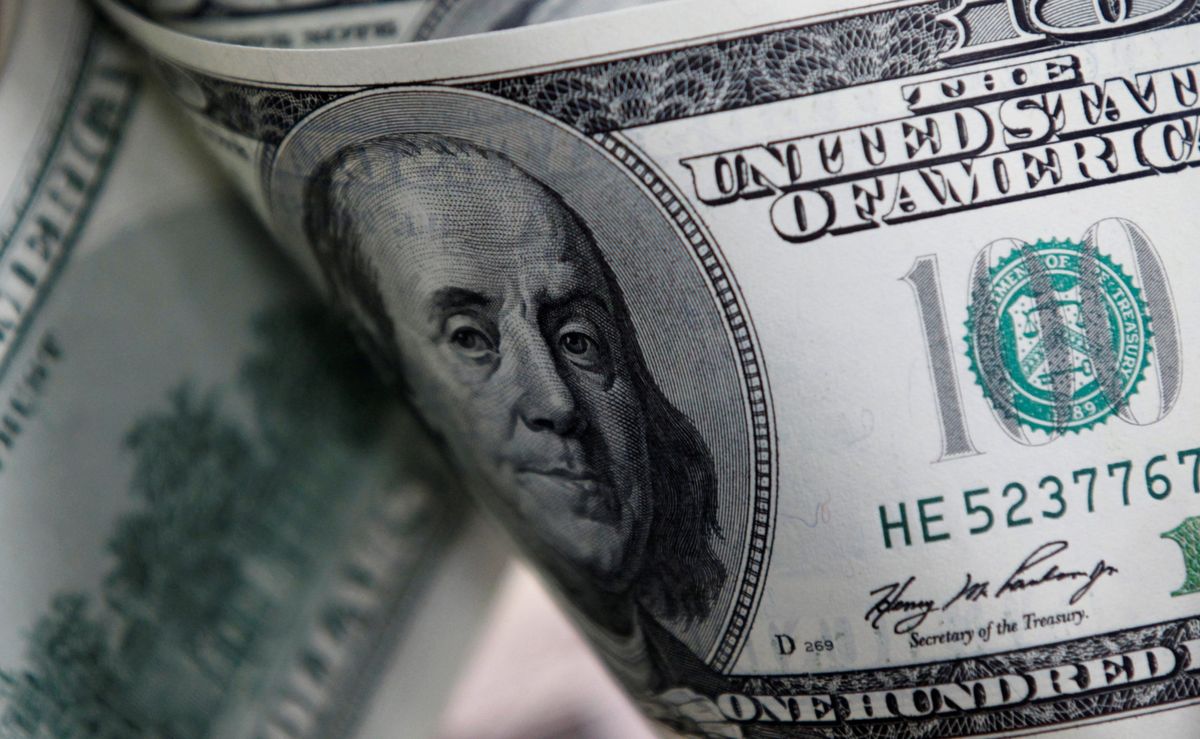The GOP is expected to shift their focus back to the growing US debt during the Biden administration

A few minutes every morning is all you need.
Stay up to date on the world's Headlines and Human Stories. It's fun, it's factual, it's fluff-free.
As President Donald Trump ends his time in office, he leaves the country with record debt of nearly US$27.5 trillion.
In American politics, it has long been accepted doctrine that the Republicans (or the GOP) are the party of fiscal responsibility, whereas the Democratic Party supports expensive social programs. Going back to President Ronald Reagan’s economic vision, also known as Reaganomics, the GOP has advocated for minimal government spending and the reduction of the national debt.
Yet, as President Donald Trump ends his time in office, he leaves the country with record debt of nearly US$27.5 trillion. Additionally, in response to the COVID-19 pandemic, the nation’s deficit spending set a record earlier this year when it surpassed US$2.8 trillion on the way to a projected US$3.7 trillion for all of 2020.
For most of the year, few Republicans have objected to spending more money to lessen the impact, as it was what was needed to confront the crisis. That is, until October when Republicans began making it known that they were once again concerned with the fiscal policy of the United States and were going to fight to rein in spending.
When President-elect Joe Biden takes office, the country will still be in a recession and facing a worsening pandemic. Nevertheless, his administration’s attempts to address these dual crises will likely face resistance from Republican lawmakers who are signaling that reducing the deficit is their main priority for the coming term.
Fiscal responsibility
Even before the pandemic, Trump’s economic policies, including the 2017 tax cut, had led to a dramatic increase in the national debt and deficit spending. In a January 2018 article, The Atlantic wondered, “Why Don’t Republicans Fret About the Debt Anymore?”:
“Republicans spent the early years of the recovery obsessed with the national debt, castigating Democrats for their supposed irresponsibility, warning about the dangers of the almighty bond market, and helping to construct complicated mechanisms to slash federal outlays.”
Up until these last couple of months, Republicans generally did not speak out against Trump’s deficit-increasing budgets. There was also little concern for how to pay for his administration’s massive tax cuts.
Exceptions included Senators Ted Cruz and Michael Enzi, each of whom has expressed concerns over the growing debt these last two years. Still, both Cruz and Enzi voted for the 2017 tax cut and Trump’s budget for the 2018 fiscal year, which was projected to add US$1.5 trillion to the deficit over 10 years.
Now, with Biden just over a month away from taking office, Cruz and Enzi’s Republican colleagues are once again expressing concern about the budget. Days after the election, Senator Lindsey Graham said he would like to become the Budget Chairman so “we can finally address the debt.”
In October, during an interview for HBO’s Axios, interviewer Jonathan Swan commended Cruz for his consistency on the issue while pointing out how the Republican Party as a whole has ignored concerns over the debt. Responding to the “cynical” nature of this about-turn, Cruz stated, “I’ve raged against my own party not genuinely fighting to rein in spending and deficits and debt.”
The major area of contention at the moment is COVID relief, with Republican lawmakers reportedly resisting compromises with the Democrats over concerns of the national debt increasing.
In late October, discussing why negotiations for another coronavirus relief bill were at a standstill, Republican Senator Rick Scott told CNBC, “We have to act fiscally responsible … We’ve got to understand that we’ve got to get our fiscal house in order.”
As a result of Congressional intransigence, Americans haven’t received a second influx of relief payments since the CARES Act provided one-time US$1,200 payments to each US taxpayer in the spring.
The Biden economic agenda
Heading into Election Day, projections for the economic plans of both candidates suggested that the trend of rising debt wasn’t going to end in the next four years.
Biden has promised to end the Trump era tax cuts, which predominantly benefited the wealthiest Americans. He has also said his tax plan would raise taxes on corporations and individuals making US$400,000 or more a year. Economists are mixed on the short-term and long-term impact such a move would have on the economy, but it might be a moot point.
Unless Democrats win both Georgia Senate runoff elections in January, the Senate will remain controlled by Republicans. That could prove deadly for Biden’s economic agenda, as any changes to the tax laws must pass through both chambers of Congress. A Republican-controlled Senate is unlikely to reverse Trump’s tax law or approve raising taxes.
That will make it difficult for Biden to address the pandemic or the economic recession, let alone implement his other policy agendas. Paying for new government programs and reforms will be close to impossible if Republicans insist on reducing the debt and the deficit at the cost of everything else.
The rising US debt
There has consistently been a chasm between the promises of Republican politicians and the reality of their governance. That includes Reagan, of whom The New York Times wrote in 1988, “Long committed to balanced budgets and fiscal integrity, Mr. Reagan has overseen the creation of more new debt than the combined deficits of all previous Presidents.”
This trend in rising debt has continued with each subsequent Republican president. At the end of the 1988 fiscal year, when President George H.W. Bush took office after serving as Reagan’s vice president, the US’ national debt was US$2.6 trillion. Four years later, it was US$4.1 trillion.
After Democratic President Bill Clinton left office eight years later, the debt had grown to US$5.6 trillion, but the government had a budget surplus, which is to say it was taking in more money than it was spending. After eight years of Clinton’s successor, President George W. Bush, the debt was US$10 trillion, the deficit had gone back up and the nation was in the middle of the Great Recession.
The debt continued to balloon under Democratic President Barack Obama, rising to US$19.6 trillion at the end of the 2016 fiscal year. The debt grew almost as much in Trump’s one term as it did over Obama’s two terms. The US Debt Clock puts the national debt at US$27.4 trillion and growing, with the country currently in another recession due to the COVID-19 pandemic.
There are, of course, countless economic factors that can lead to a nation’s growing debt. One way to counter that growth is to reduce annual deficits in the budget, something every Republican president since Reagan – Bush Sr., Bush Jr. (who inherited a surplus), Trump – have promised but failed to do.
Trump went even further by proclaiming on the campaign trail that he would reduce the national debt to nothing. Instead, he’s increased it by nearly 36%.
Have a tip or story? Get in touch with our reporters at tips@themilsource.com




Comments ()